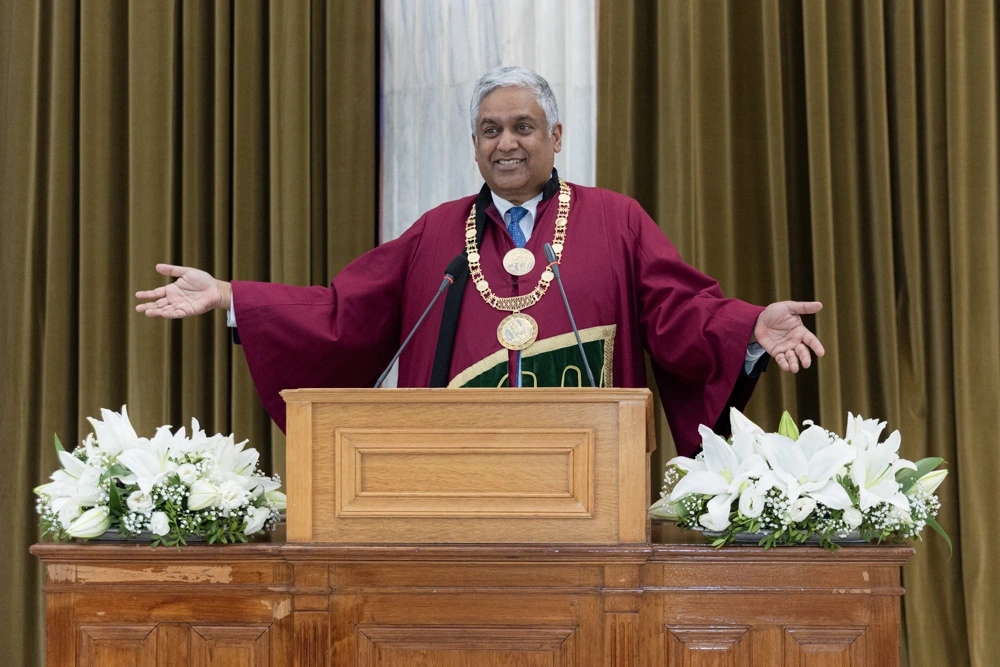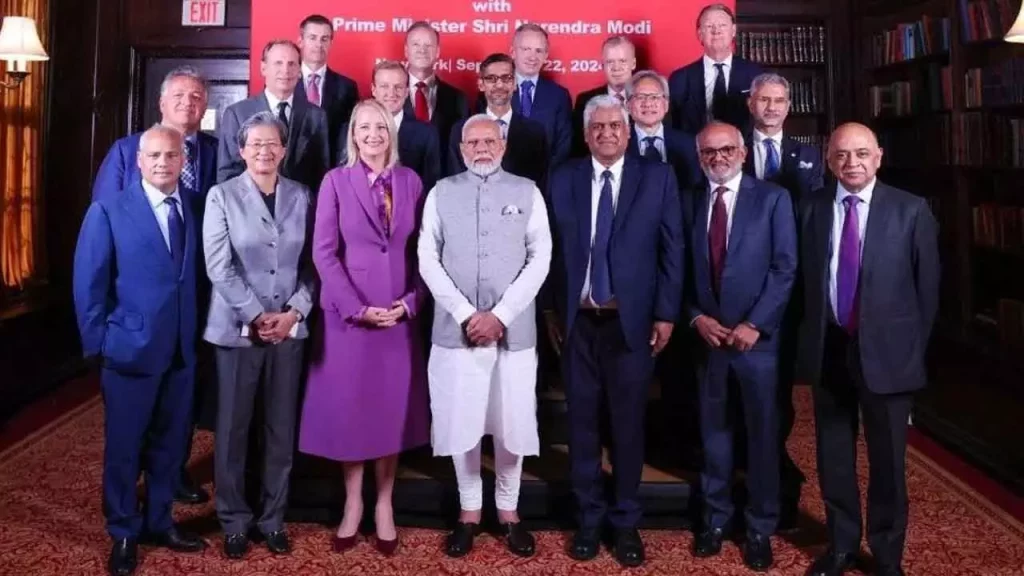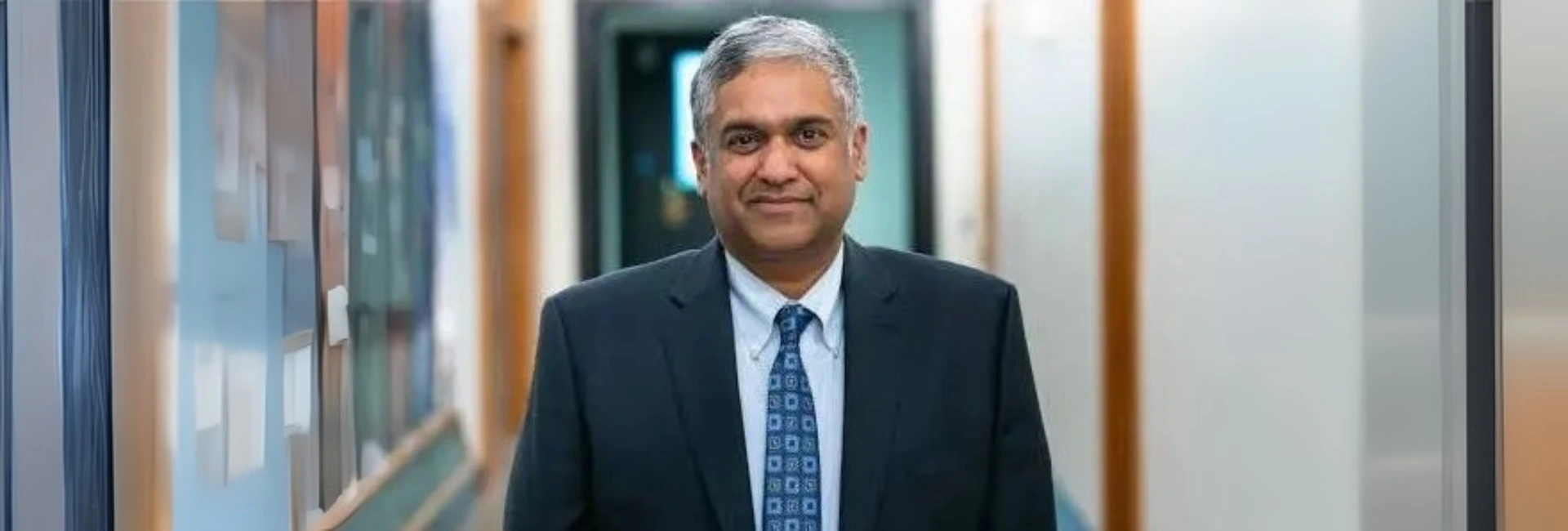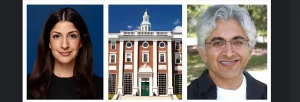(July 10, 2025) At a time when American universities are grappling with heightened political scrutiny, funding constraints, and shifting public expectations, and as confrontations with Harvard and Columbia dominate the headlines, the Massachusetts Institute of Technology (MIT) has appointed Dr. Anantha P. Chandrakasan as its next provost.
A widely respected electrical engineer and longtime member of the MIT faculty, Chandrakasan steps into the Institute’s second-highest academic office amid a national climate of the United States increasingly skeptical of academic independence and global research collaboration. Chandrakasan became the first Indian-American to hold the role since MIT opened its doors in 1861.
“I feel deeply honoured to take on the role of provost,” he said in a statement. “Looking ahead, I see myself as a key facilitator, enabling faculty, students, postdocs, and staff to continue making extraordinary contributions to the nation and the world.”

Anantha Chandrakasan
As MIT’s provost, the Institute’s chief academic and budget officer, Chandrakasan will oversee educational priorities, faculty appointments, research strategy, and long-term financial planning. Having spent more than three decades at MIT, Chandrakasan now inherits both an enviable platform and a formidable task to help chart the university’s course through an era shaped as much by technological promise as by political headwinds.
From Chennai to United States
Chandrakasan grew up in Chennai, where a childhood curiosity about how things work led him naturally toward engineering. A summer trip to the U.S. in high school, while his mother conducted research under the Fulbright Visiting Scholar Program proved transformative. He decided to stay, and eventually earned his BS in electrical engineering and computer science at U.C. Berkeley, followed by an MS and a PhD.
I only wish my parents were alive to see the continued impact they have had on me.
Anantha Chandrakasan
His parents were early influences. His mother, a biochemist, often brought him to her lab and spoke frequently about advancing science. Her work on collagen and wound healing left a lasting impression. His father, who ran a sheet metal fabrication factory, shaped another part of his thinking. Chandrakasan credits him with instilling mechanical intuition and a systems mindset, but above all, the trait of kindness that he continues to emulate.
Rejection, and the roads it opened
Anantha Chandrakasan’s early career, like many, included setbacks. As an undergraduate, he was rejected from a wireless company’s internship program in low-power electronics. Instead, his advisor, the late Professor Robert Brodersen, offered him a summer research opportunity at the University of California, Berkeley. It proved to be an experience that would later inspire the SuperUROP program at MIT, designed to give undergraduates sustained research experiences that lead to publication-quality work.
His path to MIT wasn’t immediate either. Rejected for graduate school, he remembers calling the MIT admissions office in tears. Despite the disappointment, he recalls being met with kindness and encouragement. He went on to complete his PhD at Berkeley, where his research on low-power CMOS digital design would become one of the most cited papers in the IEEE Journal of Solid-State Circuits.

Chandrakasan at National Technical University of Athens (NTUA) after being conferred the title of Doctor Honoris Causa in 2024
Later, when applying for faculty position, he wasn’t the department’s top pick but MIT eventually offered him the job. “As you can see, you need a bit of luck in life,” he remarked in an interview with The Tech.
Never forget that, when a door closes on you, if you keep looking for other doors, one of them will open.
Anantha Chandrakasan
A long arc through MIT
Since joining MIT’s faculty in 1994, Chandrakasan has held a succession of leadership roles—director of the Microsystems Technology Laboratories, head of the Department of Electrical Engineering and Computer Science, and dean of the School of Engineering. In 2024, he became MIT’s first Chief Innovation and Strategy Officer, overseeing cross-disciplinary work in AI, health systems, climate, and advanced manufacturing.
Throughout, he has continued to mentor students and conduct research, advising 78 doctoral candidates and leading the Energy-Efficient Circuits and Systems Group. “To understand the pain points of our researcher scholars, you have to be in the trenches,” he once said.
His 1992 paper on low-power circuit design remains a benchmark in the field, credited with influencing the development of energy-efficient mobile and embedded systems.
Leadership at the crossroads of policy and innovation
As a senior leader, Chandrakasan has taken MIT increasingly into global and policy arenas. Over the past year, he has met with world leaders including the Prime Ministers of India and Greece and the President of South Korea to discuss the evolving role of technology in global economies.

Anantha Chandrakasan anchored the roundable at MIT where PM modi met American tech CEOs to discuss vision for India
He believes such meetings sharpen MIT’s strategic vision while preparing students for life in an interconnected world.
There is so much for us to learn from each other to make a better world. There’s also an opportunity to bring an ‘MIT-inside’ solution to many global challenges.
Anantha Chandrakasan
The academic leader has also played a leading role in organizing educational programming for U.S. policymakers and military officials, covering topics like AI, semiconductors, and biotechnology. He views this responsibility as central to MIT’s public mission.
Building a culture of inclusion
Beyond research and strategy, Chandrakasan is known for expanding access and inclusion within the School of Engineering. He launched SuperUROP and Rising Stars, an annual career development program for women PhDs and postdocs along with several student and postdoc advisory initiatives to amplify emerging voices within the school.
His efforts come at a time when diversity, equity, and inclusion (DEI) programs are under growing political pressure. Chandrakasan has argued that future engineers must bring more than technical expertise to the table. “We need students who can do more than just code or design or build,” he said. “We really need students who understand the human perspective and human insights.”
A global mindset, anchored in personal roots
Despite the titles and responsibilities, Chandrakasan maintains a grounded sense of identity. As a child, he once dreamed of flying a Boeing 747 and spent countless hours playing with a Pan-Am toy airplane gifted by his father.
Today, that early fascination has matured into a belief in the global reach and responsibility of higher education. He champions an MIT that engages with the world, not just through research, but through dialogue, listening, and shared learning.
The work ahead
As provost, Chandrakasan has identified his core priorities: strategic financial planning, faculty recruitment and retention, and supporting interdisciplinary innovation. He plans to engage directly with faculty, students, and postdocs across MIT to shape the Institute’s evolving direction.
“My goal is to continue to facilitate excellence at MIT at all levels,” he said in an interview with MIT News.
In a year marked by institutional upheaval, geopolitical flux, and growing skepticism toward higher education in the U.S., his steady leadership and his belief in persistence, may offer a kind of quiet ballast. The road to MIT may have been marked by rejection and redirection, but for Chandrakasan, every closed door became a lesson in the value of staying curious, and staying the course.
- Follow Anantha Chandrakasan on LinkedIn
ALSO READ: Amar Bose: The engineer who enhanced the sound of music




